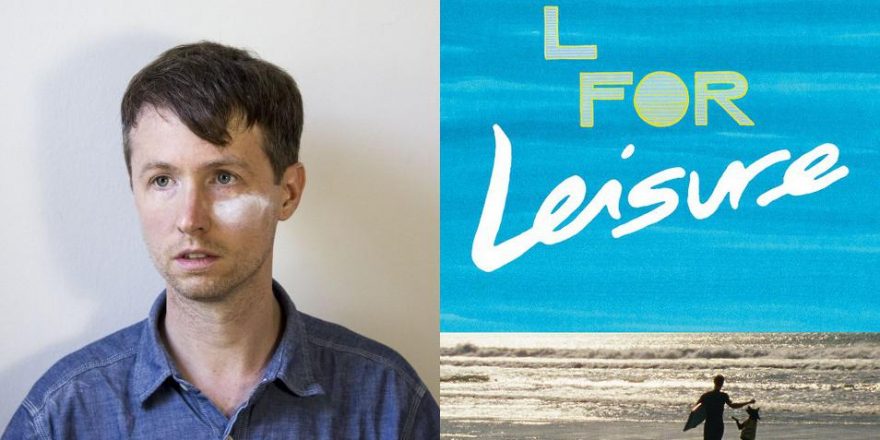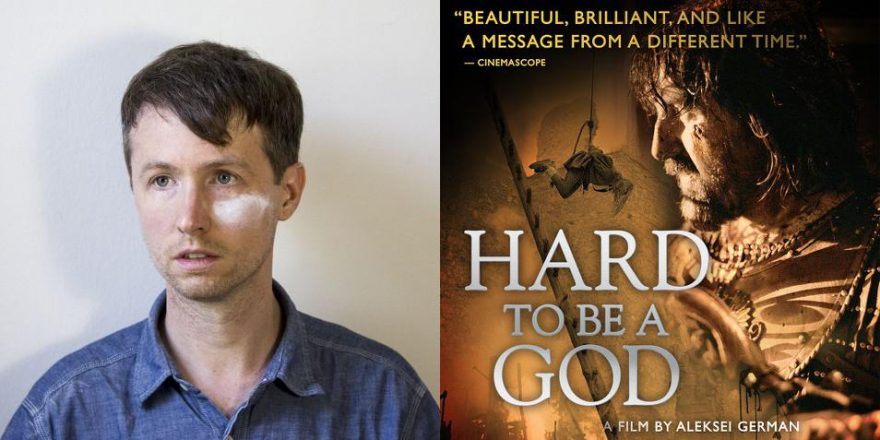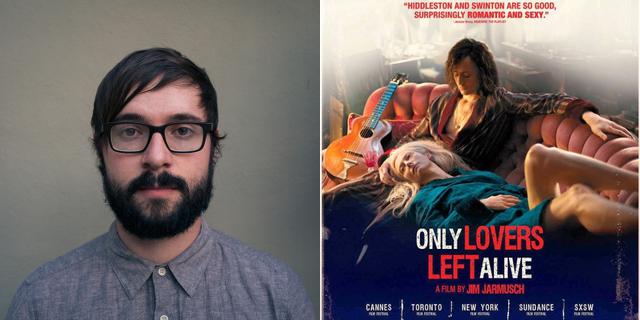I first encountered Whitney Horn and Lev Kelman’s L for Leisure by chance at the 2014 BAMcinemaFest. With no idea what to expect, I admit I spent the first 10 minutes non-plussed, but as this small, handcrafted and utterly left-field film began to weave its spell, my bemusement became giddy fascination. By the film’s end, I felt L for Leisure was a truly bold and original work, exactly the kind of exciting film I love to discover at festivals. It is also possibly the most avant-garde film I’ve seen that includes the line “those jeans are fly.”
A droll comedy delivered by way of an experimental film, L for Leisure proves that these two unlikely bedfellows can get along quite swimmingly in the right hands. The second long-form collaboration between Horn and Kalman, L for Leisure unfolds in a series of 16mm vignettes of mostly graduate students whiling away vacation weekends in different locations in 1992. It captures their conversations — precious, sincere and vacuous — and their antics (or anti-antics): rollerblading, smoking nutmeg, baking and eating too much pie, kissing, flirting with high-school girls, waterskiing, boogie boarding with a dog, the list goes on.
A plot breakdown is impossible since the film consists of barely connected episodes. Instead of a coherent throughline, we are treated to a scene featuring a hilarious one-on-one basketball game and another of grad students chatting up high-school girls in a fast food parking lot (complete with intentionally bad dance choreography). In perhaps my favorite scene of any film this year, a character shows up in highly distressed jeans with a duffle bag to tell his friends he’s received, well, a duffel bag full of jeans. “Wanna go fuck around with some jeans?” he asks, after which the characters start mugging for a VHS camera to goofy pop music, “drunk” on jeans. You might also notice the dog wearing a jean jacket with cut-off sleeves, gone in an instant. L for Leisure is full of images like this. They pass sneakily by, deemphasized, only to register after they’re gone. Was that a zebra? Did that dog have different-colored eyes? The entire film has this cumulative effect — reflection proves that there is much more here than is immediately apparent, and subsequent viewings are rewarded.
A droll comedy delivered by way of an experimental film, L for Leisure proves that these two unlikely bedfellows can get along quite swimmingly in the right hands.This deemphasis is the defining characteristic of L for Leisure, and it is consistent in every choice the filmmakers have made. Performances are intentionally flattened, characters coming across as heavily stylized versions of Cosmo Kramer’s “hipster doofus.” They talk a lot about being mellow, relaxing, and their gestating Master’s theses. It could all be written off as completely silly, but there is also a heavy undercoating of true nostalgia, aided by John Atkinson’s post-punk/new wave score, which memorably bathes a fucking fantastic waterskiing sequence in joyful release. A minimalist, almost industrial menace accompanies the film’s opening shots, though; as often as we are given release, Atkinson’s music contains an element of paranoia and dread.
This is perhaps what makes L for Leisure truly successful. Beneath its sunny goofiness of beachy California days lie echoes of Throbbing Gristle’s “Beachy Head.” The year in which the film is set, 1992, might best be remembered as the time of the L.A. Riots, which circle the periphery of the mostly lily-white cast. A sneaky and poignant conversation about the concept of “race war” might catch the viewer off guard, bringing us back to the film’s decidedly unfunny opening conversation about mankind’s desire for apocalypse. As L for Leisure nears its conclusion, glimpses of a disturbing and fantastical laser-tag game creep in between sequences — all neon, smoke, lights and beauty, the game seems to have very real casualties.
It would be a mistake to speak only of L for Leisure’s narrative and not mention its more experimental half. More or less dispensing with standard storytelling logic, Horn’s camera constantly finds small details of unexpected beauty — the sun glinting through algae on a lake, the bottom of a foot (there are shots of feet throughout), discarded Capri Sun packets, an old wooden chair, or the film’s final sequence, which features remarkable sand configurations as night falls on a beach. The narrative often gives way to long sequences of these shots, which are never filler but function according to the logic of a landscape film or even an essay film. The camera, though often static, is handheld and present, and the result is that L for Leisure has an intimate feel common to experimental film but less familiar in fiction.
L for Leisure is about as far from mumblecore and its descendants as you can get, harking back more to the work of indie directors who were in vogue in the era in which it is set — specifically, the first films of Jim Jarmusch and Hal Hartley. It also recalls Paul Morrissey’s Blood for Dracula, some of Fassbinder’s later and more theatrical work, and the pioneering online series Yacht Rock, whose characters declared that everything was “smooth.”
The lamest question one can ask a creator is “Why?” and perhaps the best and only good answer to the question is simply “Because.” L for Leisure is as ahead of its time as it is anachronistic, as over your head as it is under it. It will be divisive — people will either go along with the ride or totally hate it. Like all great films, it can’t really be explained — putting it into words makes it seem trivial. But at a time when making a movie is cheap and more of them than ever are being churned out, Horn and Kalman’s film exists on its own terms and is simply its own thing, and the sheer “what the fuck-ness” of it all makes it impossible to dismiss. There is more to say about all this, but I’ll leave that to some future grad students.






